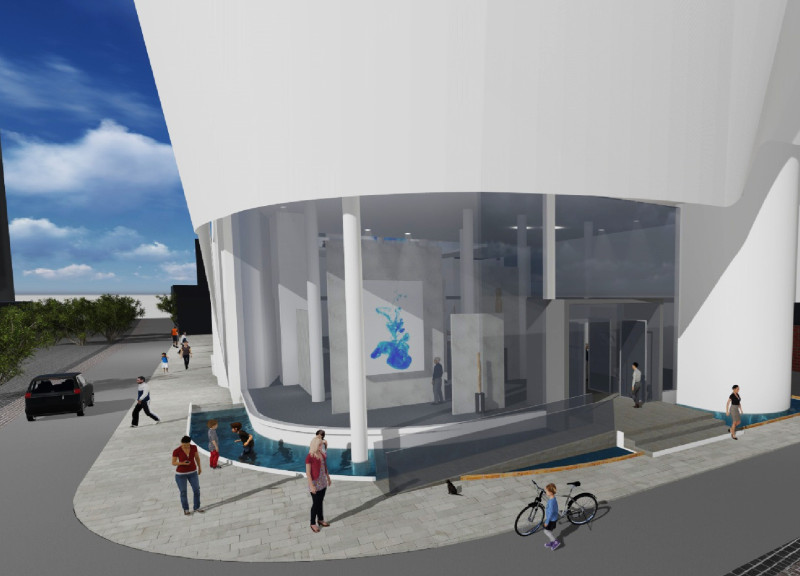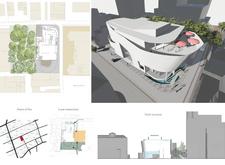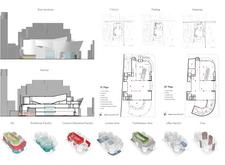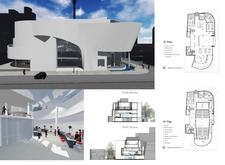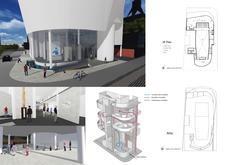5 key facts about this project
The building's layout is structured around an open plan that encourages movement and communication among users. This aspect of the design reflects a growing trend in architecture, emphasizing transparency and the importance of communal spaces. The entrance invites visitors with a welcoming facade, characterized by large glass panels. This choice of material not only enhances natural light penetration but also establishes a visual connection with the surrounding environment. The interplay between interior and exterior spaces is further emphasized by the incorporation of landscaped areas that blur the boundaries, creating a seamless transition between the urban setting and the building's core.
Various functions are meticulously accommodated within the structure, including areas for collaboration, relaxation, and social engagement. The design features flexible spaces that can be adapted for multiple purposes, ensuring that the project remains relevant and useful over time. The integration of communal areas such as lounge spaces, collaborative work zones, and dedicated event areas encourages both formal and informal gatherings, promoting a sense of community among users.
The choice of materials is central to the project’s architectural identity. Reinforced concrete provides the framework, ensuring durability while allowing for creative forms. Meanwhile, warm wood cladding adds a touch of warmth to the overall aesthetic, breaking the coldness often associated with concrete structures. Glass, utilized extensively throughout the facade, fosters transparency and visual connectivity, allowing natural light to enrich the interior spaces while providing occupants with views of the vibrant surroundings. Steel framing further enhances the project’s structural integrity, enabling significant spans that contribute to an open, airy atmosphere.
In addressing sustainability, the design incorporates a variety of green technologies that are seamlessly integrated into its architecture. Features such as green roofs, optimized solar orientation, and the use of energy-efficient materials are fundamental to reducing the building’s carbon footprint. Rainwater harvesting systems and native landscaping not only support eco-friendly practices but also enhance biodiversity, showing a deep respect for the local ecology.
Unique design approaches are evident throughout the project, particularly in its ability to respond to the urban context. The building’s proportions and materials are carefully calibrated to relate to neighboring structures while still establishing a distinct architectural voice. Outdoor spaces are designed to be multifunctional, serving as venues for events, relaxation areas, and green spots within the urban fabric. This reflects a contemporary understanding of architecture as a facilitator of communal life and environmental stewardship.
The project stands as a notable contribution to the architectural discourse, encapsulating vital themes of sustainability, flexibility, and community engagement. Its thoughtful design invites users to interact with the space meaningfully, creating opportunities for both personal reflection and social connection. For those interested in a deeper understanding of this remarkable architectural endeavor, exploring the architectural plans, architectural sections, and architectural ideas related to the project will provide further insight into the design decisions that underpin its successful execution. This exploration will enhance appreciation for both the project's functionality and its aesthetic narrative, inviting a closer look at the thoughtful complexities that characterize its architecture.


